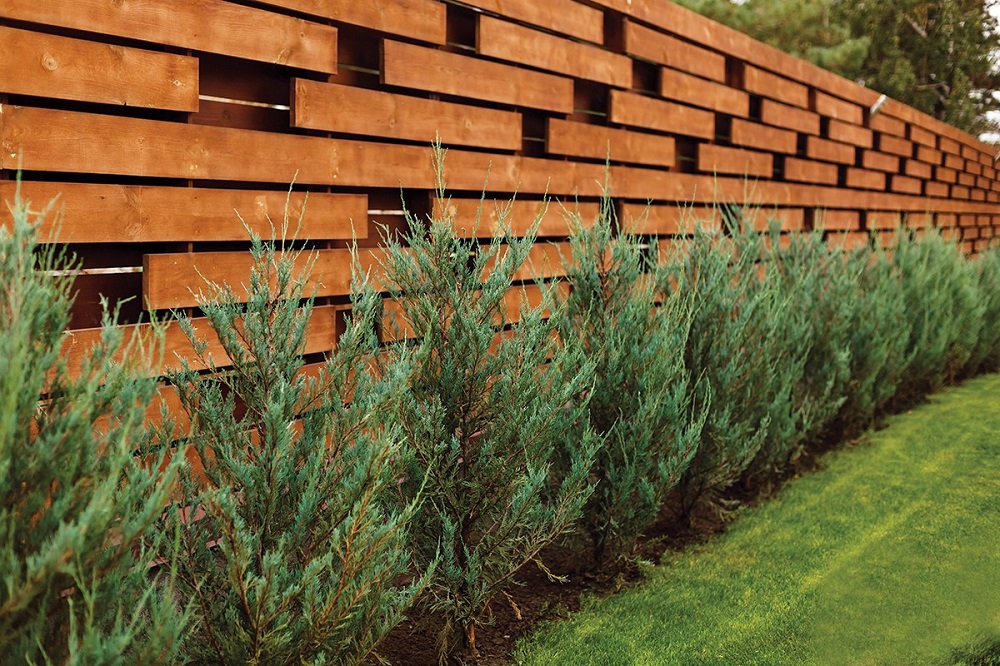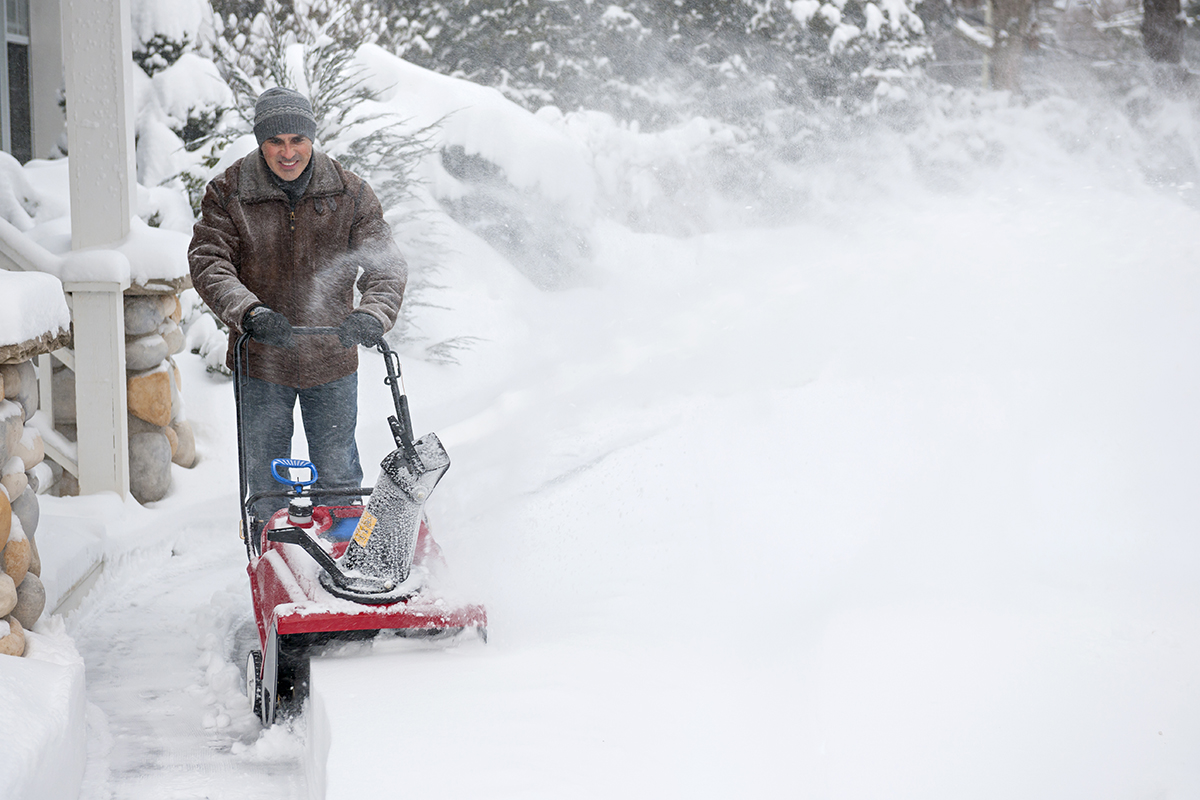WRITER | SCOTT PHILP
PHOTO | LANDSCAPE LOGIC
Elegance, Permanence, Safety
Privacy fencing has long been a staple of the American landscape. Whether used for property definition, safety, or screening, its uses are many. Traditional wood fences are economical, but in the last few decades, privacy fencing has been increasingly used as an architectural element in the landscape.
When planning a privacy fence project, it is essential to review your local city or township zoning ordinance. Many have height restrictions on privacy fences, and some will mandate that the finished side of the fence face outward, away from the home of the person installing the fence. Permits may be required in some municipalities or townships, and if you belong to a homeowner’s association (HOA), there may be additional guidelines and fencing restrictions within the development. Certain HOAs require property owners to obtain permission from the association to erect a fence on their property.
Another critical step is hiring a professional surveyor. This will ensure that you have accurate boundaries identified for your property and gives owners of neighboring properties peace of mind that your fence is indeed located on your property.
Privacy fences can be constructed of many materials. The most common these days is wood, typically cedar. Wood fences are the most economical option to install and have a lifespan of roughly 20 years. There are many different architectural styles possible with wood fencing; your imagination is practically the only limit when it comes to character.
Many property owners have recently turned to maintenance-free material with a lifetime warranty. This has caused vinyl fencing to become a popular option as well. Designs with innovative materials can include a very classic appeal or can be used in a very modern, chic way to pull the home’s architecture into the surrounding landscape.
In addition to material, opacity is a key consideration. Obviously, the more solid the surface, the more privacy it will provide. Many homeowners opt for privacy fencing that provides 70 to 90 percent coverage. Frequently, the value is more in the architectural detail than in 100 percent privacy.
Fencing can also be screened with vegetation to soften its appearance and help it blend into the natural surroundings. A skilled landscape designer can fully integrate a privacy fence into the landscape so that it appears as an asset, not a necessity.
Accent lighting with fencing is increasingly popular. Recent innovations in LED fixtures allow fences to be used as a focal feature. Increased peace of mind for nighttime use can also be achieved through accent lighting in a backyard space.
Live fencing is also an option. Privacy hedges can be combined with thin wire fencing to provide the security and safety desired while providing not only a beautiful view of a landscape but significantly lower ambient temperature. Hedges can provide a measure of shade without reflecting light and trapping heat, as a hard panel fence might.
When planning privacy fencing, consider where gates will be located, what size (width) the gates will be, whether they will be locked, and how they will function during winter months when snow accumulates.
The cost of privacy fencing varies widely, from inexpensive wood to innovative designs using maintenance-free materials. Many ready-to-go options are available for purchase from local lumber yards, big box stores, or online retailers for DIY homeowner installation.
Hiring a professional fence installer is another option if you want nothing to do with a post-hole digger and mixing cement. These contractors are familiar with the materials available and can offer helpful suggestions applicable to your property, preferences, and budget.
If you are focused on the privacy fence being an integral part of your landscape as a whole, a landscape architect or designer can be an incredibly helpful resource in selecting the proper design and materials for a fence, all while focusing on its overall purpose.
With some thought to the character of your property, your interest in seclusion and safety, your budget, and the amount of elbow grease you wish to expend, privacy fencing promises to be part of your home’s landscape for years to come.








